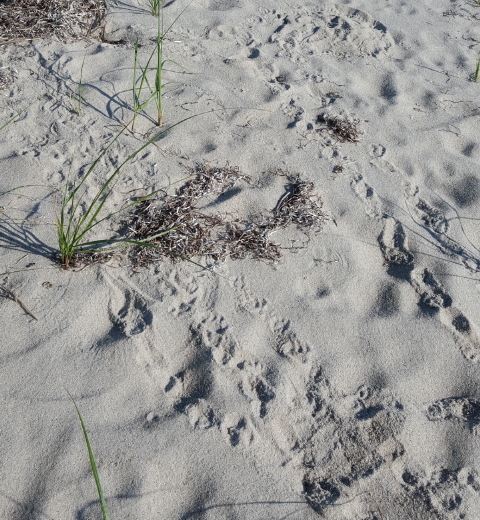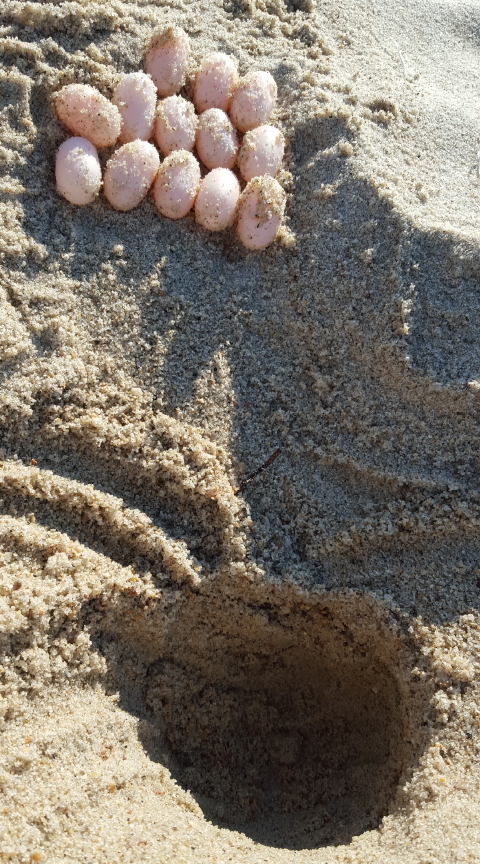Diamondback Terrapin #95 Laying Eggs off Sippican HarborÂ
Well, as Turtle Journal has learned with decades of experience, the easiest way to discover a diamondback nest is to find mother terrapin digging, and then patiently, silently, stealthily waiting for her to complete the process.
Diamondback Terrapin #95 Nesting in Sandy Patch at Wrack Line
With a bit of luck and skill, you spot the turtle from a considerable distance and you wait with telephoto lens, so that you don’t disturb her.
Diamondback Terrapin #95 Laying Eggs into Nest Chamber
If she detects you before beginning to actually lay eggs, the terrapin will most likely abandon the nest.
Diamondback Terrapin #95 Laying Eggs into Nest
If she’s already started laying, as with Terrapin #95 above, the turtle may continue until she deposits all her eggs.
Diamondback Terrapin #95, Her Excavated Nest, 12 Perfect Eggs
When she finishes laying eggs, and the terrapin begins to cover and disguise the nest, you can approach. Â Here Diamondback Terrapin #95 deposited 12 perfect eggs.
Diamondback Terrapin Nesting Run Tracks & Nest (Top Right)
Sadly for researchers, terrapins are fairly cleaver and stealthy themselves. Â So, you learn to read tracks. Â Like a tank, turtles leave “tread marks and plastron drags” as they crawl up from the water and meander along the beach. Â With the right sand conditions, you get beautiful tracks like those above. Â The direction of travel can be discerned from the upside down commas that turtles leave as they push off with their rear legs.
Diamondback Terrapin Nest (Left) and Nesting Run Tracks
And if conditions are just perfect, like this morning, the nest itself shows as an unmistakable pattern in the sand. Â Within a few hours, wind and sun will erase all signs, and the nest will disappear.
Excavated Diamondback Terrapin Nest and 13 Perfect Eggs
So, as with all things in life, 99% of success is determined by just being there at the right time. Â The challenging part, though, is figuring out where and when.
NOTE: Â Diamondback terrapins are a protected species in the Commonwealth of Massachusetts. Â Please alert Turtle Journal, 508-274-5108, if you find a turtle or a nest. Â We’re always ready to respond.
















